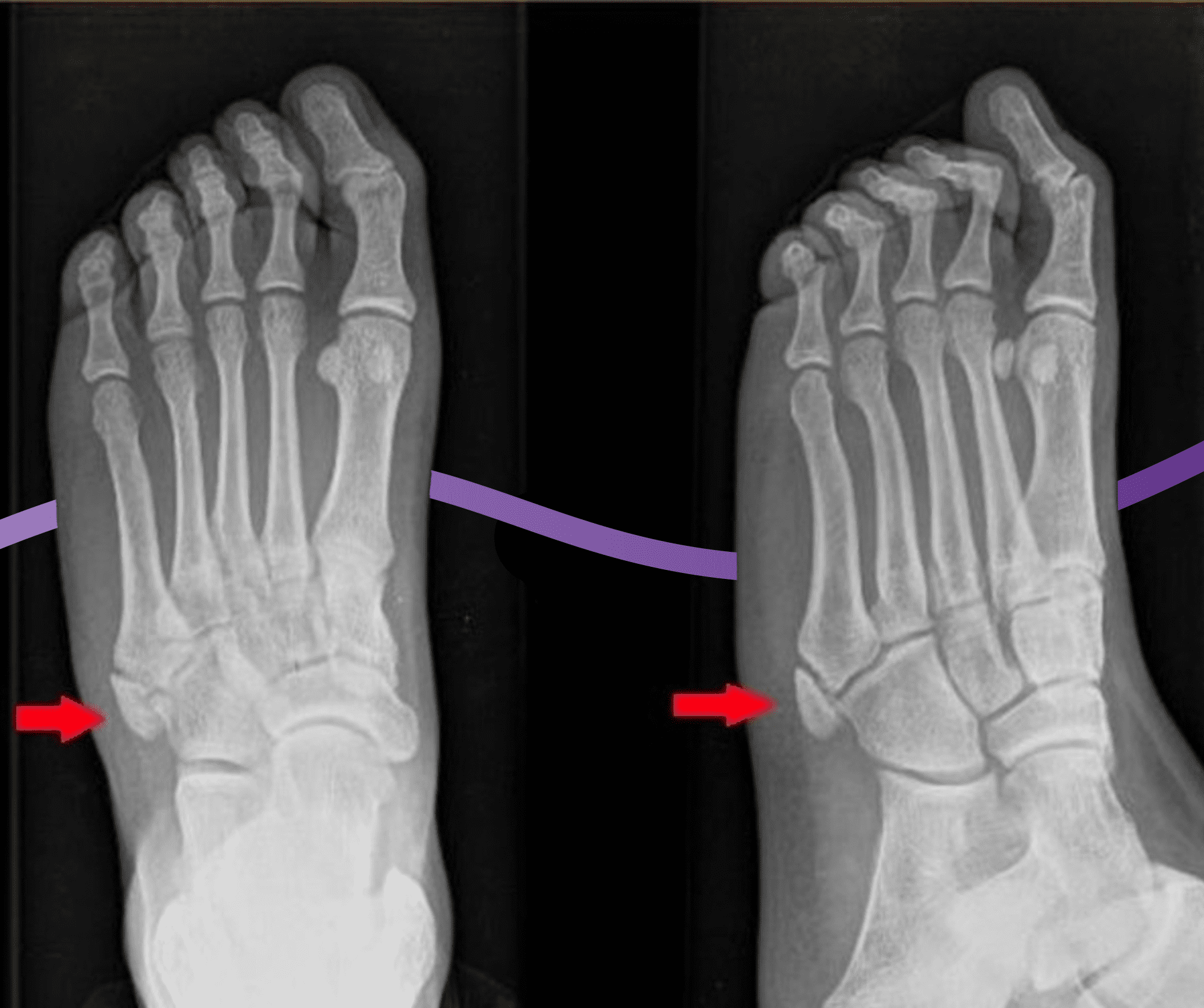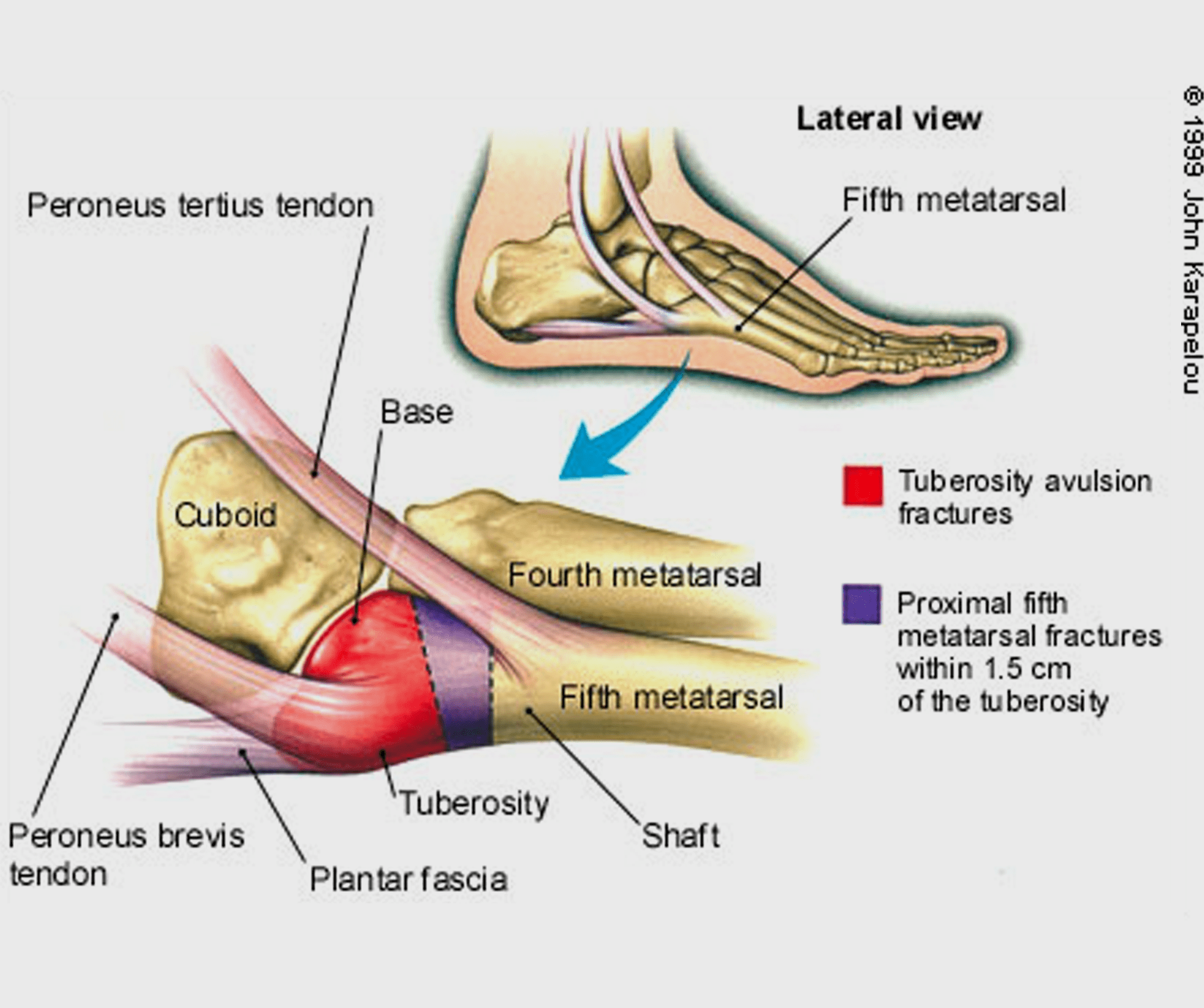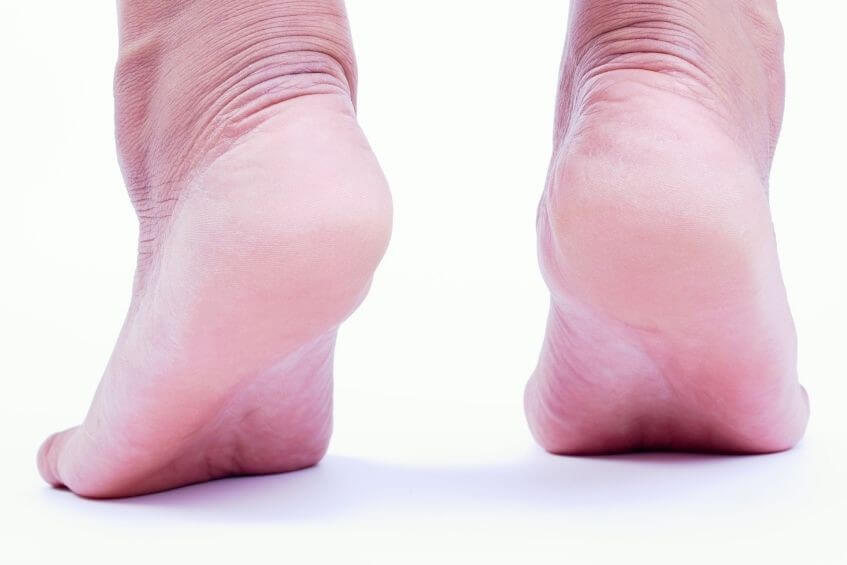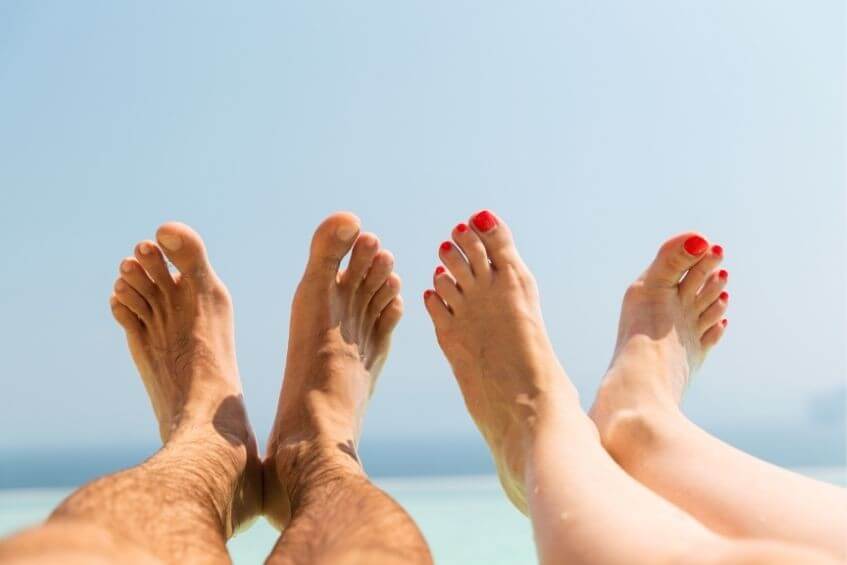
Jump to section
Iselin’s disease is a type of growing pain that affects
the feet in children. Specifically, it affects the outside border of the foot at the bony ‘bump’ that you can feel if you
move your hand along the outside edge of your foot. This bump is known as the ‘styloid process’, and it is located at the
base of your fifth metatarsal bone, approximately halfway along the outer foot.

Despite having an alarming label of a ‘disease’, Iselin’s is actually a painful but temporary growth-related condition
that cannot recur after your bones reach maturity and stop growing.
In order to understand what causes Iselin’s disease, we need to first look at how bones grow. Before our bones mature, they contain specific cartilaginous areas called ‘growth plates’ which our body uses as a construction site to add new bone cells to, and hence grow our bones. Being a work in progress, these growth plates aren’t as strong as the rest of the bone, making them more vulnerable when tension is applied to the bone.
While our bones grow, our muscles do too, lengthening and strengthening, and going through periods of tightness as they lengthen and keep up
with the body’s growth. Many of these muscles attach to the bones, in areas close to the growth plates. This means that when the
muscles pull and place tension on the bone while kids are moving and active, it’s the growth plates that become irritated and painful
as a result. This is exactly what happens in Iselin’s disease, with the growth plate being present at that bony bump at the base of
the fifth metatarsal, and the attaching tendon responsible for the pulling and irritation being the peroneus brevis tendon.

The most common symptom of Iselin’s disease is pain on the outside border of the foot during physical activity. You may also notice:
Another notable symptom of Iselin’s that is often observed in case studies is the lack of any identifiable injury history, trauma or
infection that may otherwise explain the symptoms.
Risk factors for Iselin’s disease can include:
Diagnosing Iselin’s disease can be done based on the patient’s history and the physical assessment. Confidently diagnosing Iselin’s can be made difficult by other pathologies with similar presentations often occurring in the area, such as stress fractures, an avulsion fracture, or a Jones’ fracture. In these cases, x-rays can be offered to rule out other possible diagnoses, and an ultrasound can be performed to rule out any coinciding muscle or tendon injuries.
If you think that your child may have Iselin’s disease, then it’s important to bring them in to their podiatrist for an assessment and treatment. Pain never occurs for no reason, so even if the cause is not from Iselin’s, our podiatrists will work to uncover and diagnose the true cause, and treat it accordingly.
Here at The Feet People, we understand that for children, it’s about a lot more than just having foot pain. It’s about being
able to participate in the sports match they’ve been looking forward to all year, about being able to get outdoors and keep up
with their friends, about being able to get to the park with the dog - there are so many physical, emotional, mental and social factors
involved. That’s why our treatment aims to:
In order to do this, we may use:
While you’re at home, you may choose to use ice to help reduce any swelling, which can help reduce pain. If your child's pain is severe, you may use painkillers (NSAIDs) to help relieve their pain. We also recommend they rest and avoid any activities that elicit your symptoms until you’re able to see your podiatrist.
If Iselin’s disease is ignored and left untreated, then it can cause ongoing pain for your child during physical activity, as well as much frustration from missing out on their favourite sports and activities with their friends. While Iselin’s disease is self-limiting, meaning that the symptoms will stop once the bones reach full maturity and the growth plate hardens, the painful symptoms can still persist for many weeks and months, making it a difficult time for a child.
While it may be difficult to prevent Iselin’s entirely due to the nature of the condition, the best way to reduce the likelihood of developing Iselin’s is to encourage your child to stretch well and warm-up before physical activity. This helps prevent tightness in the peroneals and calves, which eases the tension on the growth plate in the foot.
If symptoms arise, get your children seen and treated early, before the irritation to the growth plate increases - and with it your
child’s pain.

Our feet are the foundation for the entire body, so it's important that they have enough strength to tolerate our activity levels. Use
these three exercises to help strengthen your feet.

Not everyone needs orthotics, but they can play an integral role in treating or relieving pain in several foot and lower limb conditions.

The heat and humidity of an Australian summer makes it a prime time for issues to arise, so our newest podiatrist Lucy has put together
seven helpful tips to keep your feet healthy and problem free throughout summer.
| Monday | 7:40am - 6:00pm |
| Tuesday | 7:40am - 6:00pm |
| Wednesday | 7:40am - 6:00pm |
| Thursday |
7:40am - 6:00pm |
| Friday | TEMP CLOSED |
| Saturday | CLOSED |
| Sunday | CLOSED |
Ground Floor, 344 Queen Street,
Brisbane City QLD 4000
| Monday | 7:40am - 6:00pm |
| Tuesday | 7:40am - 6:00pm |
| Wednesday | 7:40am - 6:00pm |
| Thursday |
7:40am - 6:30pm |
| Friday | 7:40am - 5:00pm |
| Saturday | 7:40am - 4:30pm |
| Sunday | CLOSED |
Newmarket Village, 114/400 Newmarket Rd, Newmarket QLD 4051